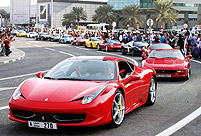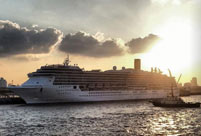Curators discuss how to translate offerings into a revenue stream
Museums should no longer be thought of as reinforced concrete buildings housing inanimate objects in glass cases, but should instead focus on interacting with visitors and raising revenue, a seminar heard.
The seminar, "Museums and Cultural and Creative Development Communication", was held at Beijing's Palace Museum on Nov 5.
Co-hosted by the Beijing Municipal Administration of Cultural Heritage and the Chinese Museum Society, the seminar explored issues around the "cultural and creative industry chain" for museums, with international specialists.
The challenge facing museums is how to translate their offerings into a revenue stream, either through ticket sales or souvenirs.
Xiang Yong, deputy director of Peking University's Institute for Cultural Industries, believes a museum artifact has three core values: worship, demonstration and interaction.
"For example, there is only one Mona Lisa in the world. Its rarity creates the 'worship effect' on the audience. They want to interact with the masterpiece and take souvenirs home rather than just seeing it," Xiao explained.
"So the key is really about how to transfer the three values into economic value," he said.
Xiang identified Yilan county in northeast Taiwan as a successful example.
Yilan once suffered from pollution and economic problems related to traffic congestion. Since the 1980s, however, the county has brought polluting factories under control while developing new-concept eco-museums that include among their exhibits depicting nature, farms, villages and architecture.
The county covers 2,137 square kilometers and has some 50 museums, incorporating purpose-built traffic routes designed to provide a particular cultural experience.
"The whole of Yilan has become a giant museum," Xiang said.
On the subject of souvenirs, Wang Yong-ming, a professor from Lunghwa University of Science and Technology in Gueishan, Taiwan, said creativity is the key to success.

 Luxury-cars parade held in Dubai
Luxury-cars parade held in Dubai Special forces take tough training sessions
Special forces take tough training sessions Fire guts 22-storey Nigeria commercial building in Lagos
Fire guts 22-storey Nigeria commercial building in Lagos A girl takes care of paralyzed father for 10 years
A girl takes care of paralyzed father for 10 years A record of Beijing air quality change
A record of Beijing air quality change In pictures: explosions occur in Taiyuan
In pictures: explosions occur in Taiyuan Hello! Horror Halloween Celebration!
Hello! Horror Halloween Celebration!  The catwalk to the world of fashion
The catwalk to the world of fashion  Cruise trip to Taiwan
Cruise trip to Taiwan  Maritime counter-terrorism drill
Maritime counter-terrorism drill Loyal dog waits for master for six months
Loyal dog waits for master for six months Oriental education or western education?
Oriental education or western education? China in autumn: Kingdom of red and golden
China in autumn: Kingdom of red and golden National Geographic Traveler Photo Contest
National Geographic Traveler Photo Contest Chinese screen goddesses from Beijing Film Academy
Chinese screen goddesses from Beijing Film Academy Day|Week|Month